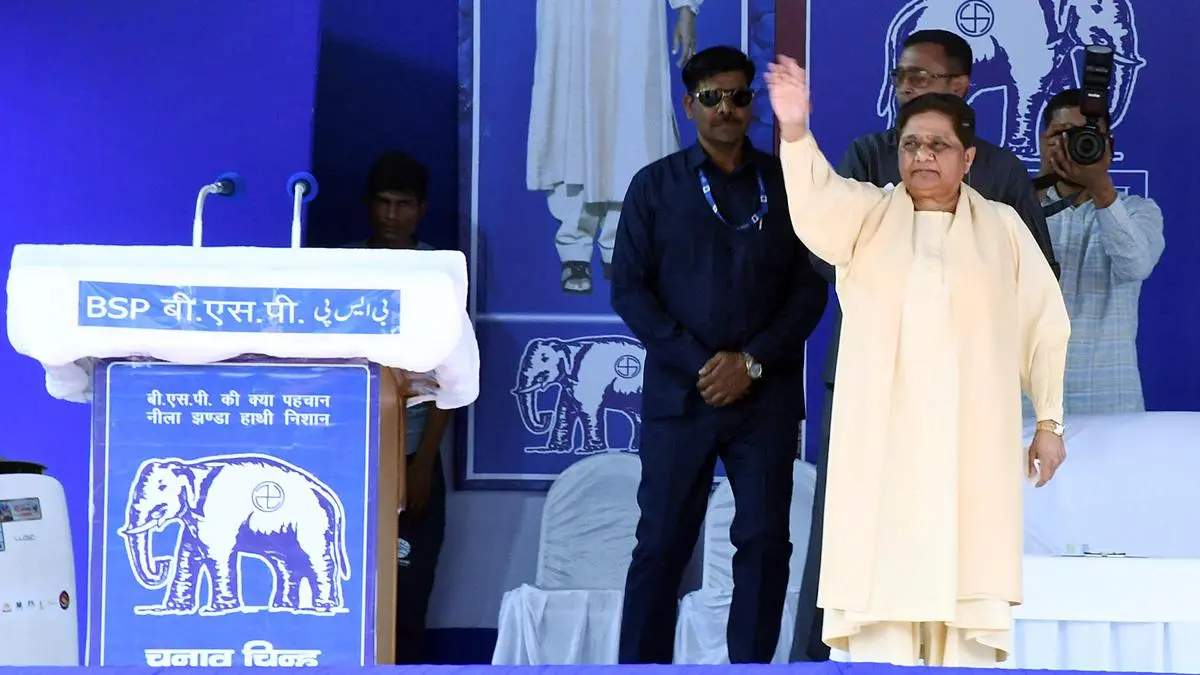The Changing Politics of Dalits in Uttar Pradesh: Mayawati’s Fall and Chandrashekhar Azad’s Ascendancy
Dalit politics in Uttar Pradesh (UP) is changing in a big way. For several decades, the Bahujan Samaj Party (BSP) under Mayawati’s leadership has been the party that dominated Dalit politics in the state. Yet, the BSP’s power has been gradually decreasing over the last few years, leaving a political vacuum that upstart leaders such as Chandrashekhar Azad of the Azad Samaj Party (ASP) are seeking to capture. This realignment is a watershed moment in Dalit politics with profound consequences for the politics of UP and India as a whole.

The Rise and Fall of BSP
Mayawati’s political journey is deeply intertwined with the rise of Dalit consciousness in UP. Under the guidance of Kanshi Ram, the BSP was formed in 1984 to empower Dalits and other marginalized communities through political representation. Mayawati’s rise to power in the 1990s and early 2000s marked a historic moment as a Dalit woman led the state government four times.
But the BSP began to lose its grip after the 2012 state elections. In 2017, the party’s share in voting fell to 22.23%, while the Bharatiya Janata Party (BJP) won in a landslide. The 2019 general elections were worse, with BSP winning just 10 seats in alliance with the Samajwadi Party (SP). By the 2022 state elections, BSP’s support base had eroded further, with its vote share shrinking to a historic low of around 13%.
Political analysts attribute this decline to Mayawati’s perceived disconnect from grassroots issues and her reluctance to confront the BJP directly. The BSP’s traditional support base of Dalits, Muslims, and Other Backward Classes (OBCs) has gradually fragmented, with many shifting towards the BJP and SP.
Chandrashekhar Azad: A New Dalit Politics Face
In the midst of BSP’s downfall, Chandrashekhar Azad, the Bhim Army and Azad Samaj Party (ASP) founder, has risen as a new and vibrant leader. Azad has become popular among young Dalits due to his aggressive approach towards caste violence and his readiness to confront the BJP government head-on.
Azad became popular in 2017 for mobilizing demonstrations against upper-caste brutality in Saharanpur. His arrest and release transformed him into a symbol of resistance for the Dalits. Unlike the careful, calculating politics of Mayawati, Azad has come to embrace activism and frontal opposition, something that appeals to a younger generation of Dalits.
Though during the 2022 state polls the ASP made no substantial electoral dent, the increasing visibility and his open rebellion against caste violence and communal atrocities have established him as a crucial player in the politics of UP. His convergence with other niche parties and rights movements indicates that he is self-positioning as a pan-Dalit, national-level player.
The Road Ahead
The future of Dalit politics in UP remains uncertain. While Mayawati’s BSP struggles to reclaim its lost ground, Chandrashekhar Azad’s rise presents both an opportunity and a challenge for Dalit unity. The BJP’s success in mobilizing non-Jatav Dalits through welfare schemes and political representation has complicated the equation further.
If Azad is to succeed, he will have to win over more than just core Dalit voters and form strategic alliances. While Mayawati has the daunting task of getting back in touch with her grassroots supporters and updating the BSP’s political strategy.
The struggle for representation of Dalits in UP has a long way to go. Whether Azad is able to convert his popular support at street level into polling success or whether Mayawati is able to make a comeback politically only the future can say. One thing, however, is certain — Dalit politics in UP begins a new, uncertain era.








